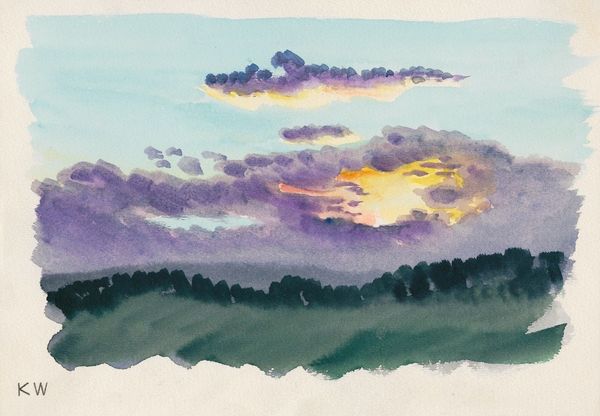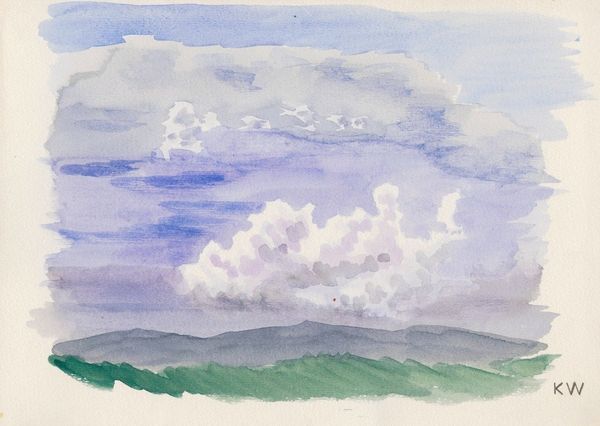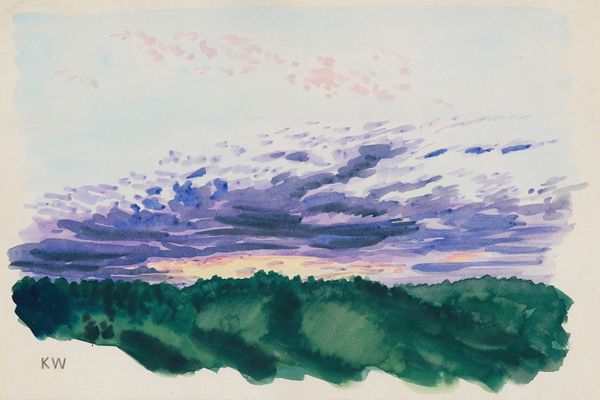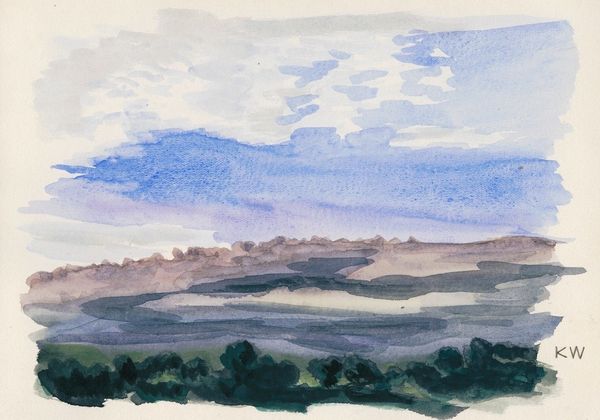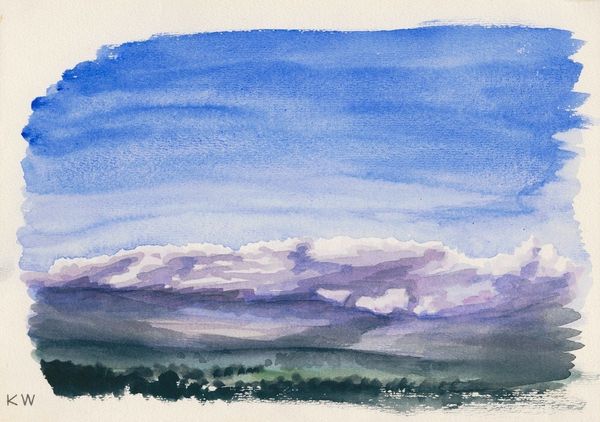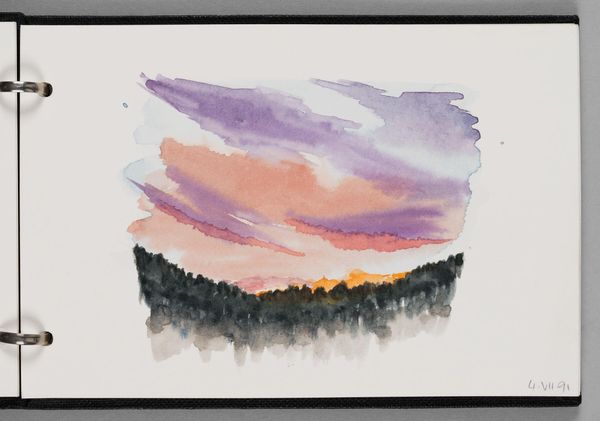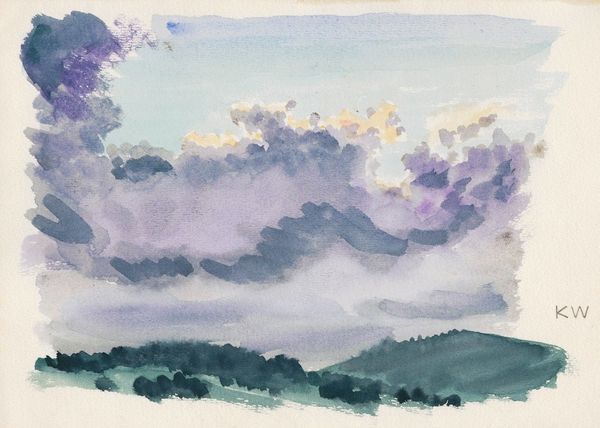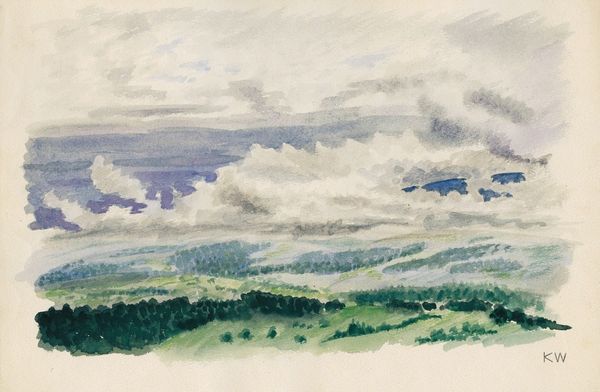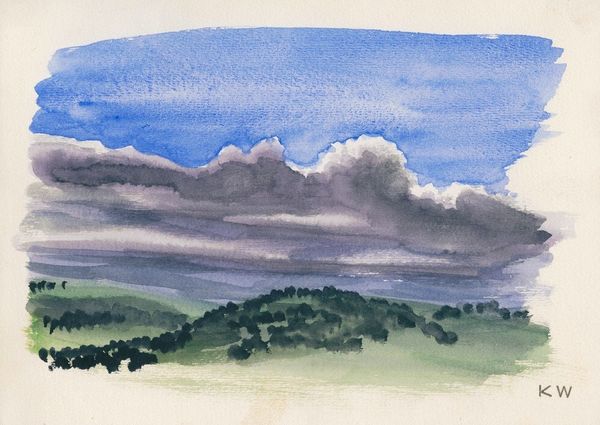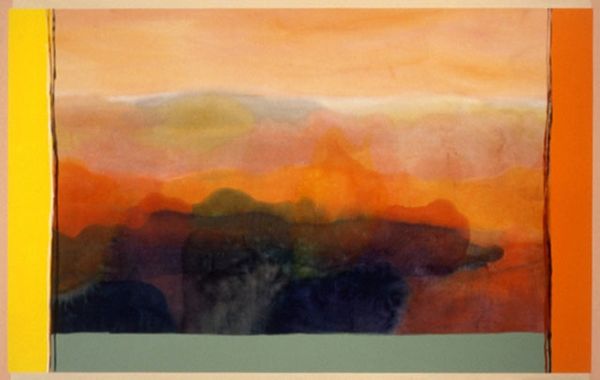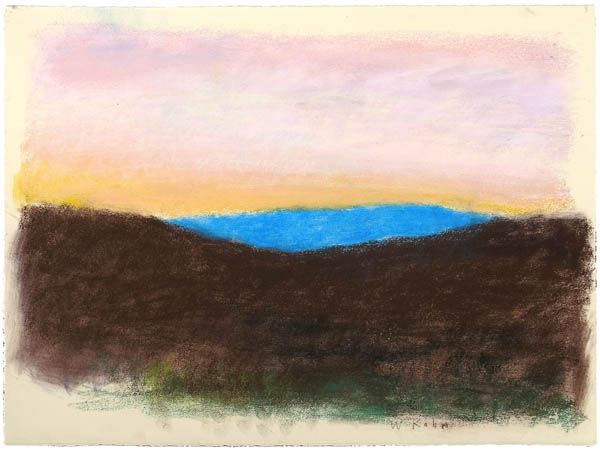
Copyright: Public Domain: Artvee
Curator: Look at "Naturstudie XII," a watercolor and tempera piece crafted by Karl Wiener in 1924. It's quite striking, wouldn't you agree? Editor: Indeed. My first impression is one of subdued drama. The intense blues and purples against that band of vibrant yellows and oranges create a palpable tension, a sense of nature caught between states. The texture suggests it's quite layered, maybe a fast study done en plein air? Curator: Precisely. Knowing that this was made in 1924 allows us to consider its connection to the modernist landscape tradition, even its echoes of Impressionism. How does Wiener play with abstraction here? It seems to move away from strict representationalism. There’s an emotional quality too, a kind of pre-war angst perhaps? Editor: Absolutely, though I am more drawn to the practical considerations. Note the materiality of the tempera, how its texture and matte finish create such depth in the dark foliage. How did he source the specific pigments used, given that period's limitations in color creation? Was it influenced by any specific social environment in production and acquisition? Curator: It also invokes dialogue with societal movements of the era, a burgeoning environmental awareness. Wiener perhaps is engaging with philosophical considerations too, a certain phenomenological connection to the world? This invites us to interrogate what is implied through these particular techniques. Editor: A landscape captured using mass produced paints is, after all, far removed from direct interaction with nature that the artist might have wanted to convey. We often overlook that materiality and access of art depends highly on industrialism, capitalism, colonialism, etc. Curator: That's insightful, the materials are clearly part of a bigger narrative. The artist's decisions on their relationship to subject and method of production reveals an individual response to nature, filtered through a particular socio-economic lens of the 1920s. Editor: Precisely, seeing the painting now brings awareness not only of natural environment but the social landscape too. We often perceive art history divorced from mundane contexts of industrial production. Curator: Yes, and recognizing those complex, interconnected factors ultimately enriches the artwork beyond just aesthetics. Editor: Indeed. We must analyze more fully its material conditions, even for plein air studies like this.
Comments
No comments
Be the first to comment and join the conversation on the ultimate creative platform.
